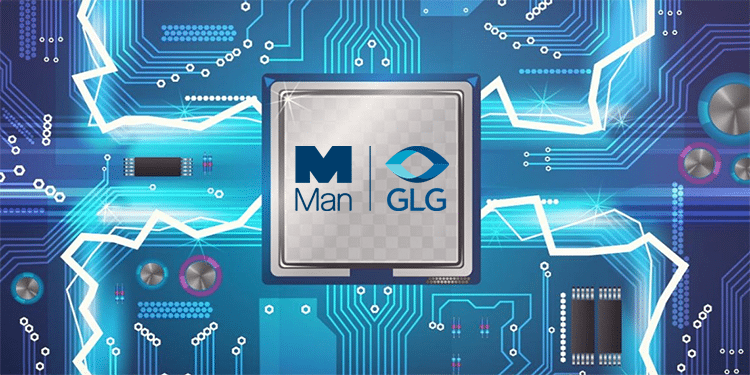UK hedge fund giant Man GLG (formerly GLG Partners) utilizes long-only strategies keyed into alpha capture; and the approach certainly seems to have paid off. By March 31, the firm had $28.8 billion in assets under management. Man GLG made some big Q2 moves in two of the chip sector’s biggest giants: Micron (MU) and Advanced Micro Devices (AMD). How does the giant see the risk/reward for MU and AMD?

For context, Man GLG is all about delivering attractive risk-adjusted returns on the back of security selection. The wholly owned subsidiary of British alternative investment manager Man Group cultivates the strongest investment talent. Then, the firm hones this talent within the space of ‘autonomous collaboration.’ This collaborative atmosphere serves as the crux of Man GLG’s culture and competitive leverage.
Recently, the firm created a new role: head of machine learning. Man GLG understands machine learning offers a unique “opportunity” for discretionary investment managers. Man GLG CEO Teun Johnston cheers the “analytical tools” here that “complement, and further enhance” the ultimate “decision making processes.”
Let’s take a closer look at how the firm’s process of decision led to a total axe to its Micron holding- and an ante up in AMD:
MU Gets Booted Out
The last quarter saw Man GLG run for the hills on Micron. How negative is the hedge fund firm on MU? Man GLG sold off its entire position in the chip giant- all 365,317 remaining shares.
It seems word on the Street- at least over at Goldman Sachs- aligns with Man GLG’s bearish MU play. In fact, Micron shares closed down 4% on Wednesday after Goldman Sachs’ Mark Delaney downgraded from Buy to Neutral and cut his price target from $68 to $50. (To watch Delaney’s track record, click here)
Yet, even with a downgrade and lower expectations, Delaney notably still anticipates close to 20% in upside potential ahead for Micron stock.
Here’s why Delaney has turned to the sidelines. Delaney sizes up a “snowballing” dip in memory chip demand; the kind of “effect” that usually circles for various quarters.
A warning flag for memory downturns: a firing up in price dips. In reaction, consumers stall buying activity and hold out for even cheaper prices.
“Memory downturns usually last for several quarters and can see an acceleration in price declines, as customers delay procurement to wait for lower prices when possible, causing a snowballing effect that can lead downturns to be worse than initially anticipated by investors,” explains the analyst.
Delaney highlights an “incremental weakness in both DRAM and NAND fundamentals per our discussions with industry contacts, and also based on our supply/demand analysis.”
Bottom line, the now sidelined analyst forecasts in a worse-case scenario, shares of MU stumble down to $20- and DRAM and NAND weakness suggests Micron has odds to underwhelm the Street’s current 2019 numbers by 31%. Delaney is wary on Micron’s gross margins through the middle of next year.
In the bigger picture, TipRanks reveals that the rest of Wall Street doesn’t side with these bearish moves when it comes to MU’s prospects. The stock is ranked as a ‘Strong Buy’ among best-performing analysts. Out of 19 analysts polled in the last three months, 16 have come out bullish on the chip giant- with only 3 playing it safe on MU. Looking at consensus expectations, the bulls also win out here. The 12-month average price target on MU rounds out to a confident $81.11, marking a robust 94% in upside potential ahead. (See MU’s price targets and analyst ratings on TipRanks)
Dialing Up a Notch in AMD
In the second quarter, Man GLG fired up bullish confidence on AMD, adding another 1,365,974 shares. Now, the hedge fund firm owns 1,530,407 shares in AMD worth $15,732,000- an upbeat 831% boost.
Just on Wednesday, AMD shares were on a 7% tear. Analysts have been coming out left and right with bullish research notes on the chip giant- and hiking target expectations. Rosenblatt’s Hans Mosesmann now bets AMD can shoot $10 higher to $40. Mosesmann boils down his target jump to two key points of enthusiasm: 1) a quicker-than-anticipated ramp up of AMD’s next-gen 7-nanometer GPU 2) the company’s competitive manufacturing upper hand.
On Monday, Merrill Lynch’s Vivek Arya reiterated a Buy on AMD and lifted his price target from $25 to $35. This implies another nearly 7% in upside potential on tap for the chip giant. (To watch Arya’s track record, click here)
Worthy of note, Arya has a stellar track record of betting successfully on AMD. In fact, this five-star analyst earns an average of 41.0% in profits on the stock.
Arya revisited his AMD model and came away encouraged, dialing up assumptions for 2020 gross margins to 43%. Now, the analyst calls for 10% more in EPS to $1.
“AMD benefits from: 1) potential for less restrictive wafer supply agreement from main fab GlobalFoundries’ recent exit from high-end manufacturing, enabling AMD to further leverage fab leader TSMC; and 2) mix-shift towards higher value computing/graphics (45-50%+ GM, 70% of sales, growing 20%+) from low-margin consoles (25% GM, 30% of sales, in decline),” writes Arya.
Moreover, AMD boasts a process manufacturing edge over Intel. Arya believes, “AMD’s accretive share gains could extend given main rival’s Intel’s manufacturing challenges.”
Consider that AMD’s valuation shines “compelling relative to the growth opportunity,” strong against its two arch rivals in the chip arena.
Moving forward, “We anticipate continued positive news flow around customer traction (engaged with all top 7 cloud providers, only announced 3 thus far); and around the pipeline,” contends Arya.
TipRanks showcases that in the last three months, 9 best-performing analysts have issued bullish recommendations on AMD. Caution is also certainly circling AMD shares, with 8 analysts hedging their bets on the sidelines and 2 bears on the loose. Where do consensus expectations stand? Ultimately, heavy apprehension is baked into the 12-month average price target of $22.53. In other words, Wall Street warns of 30% downside ahead for this chip giant.